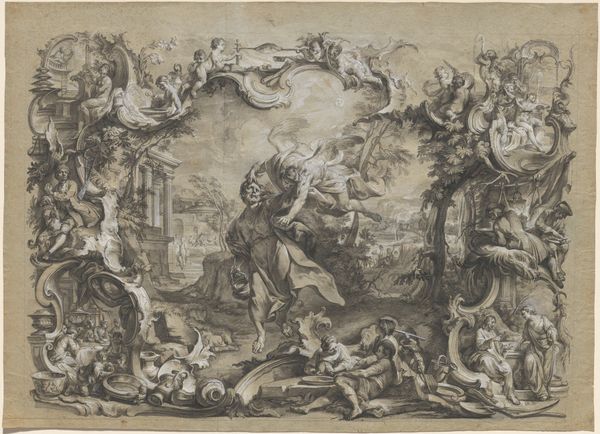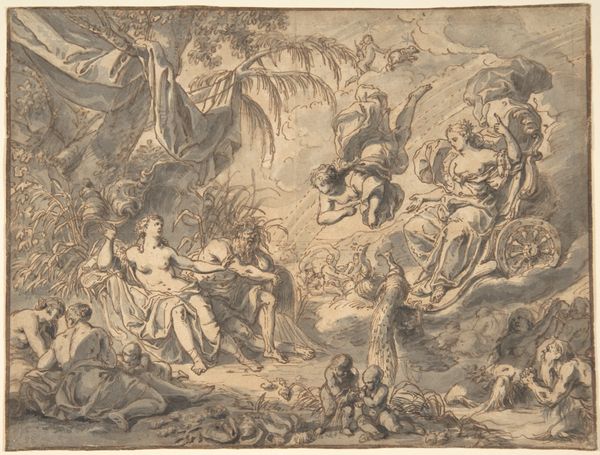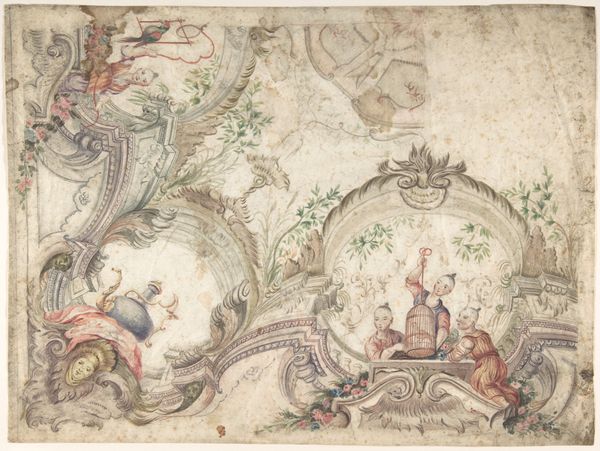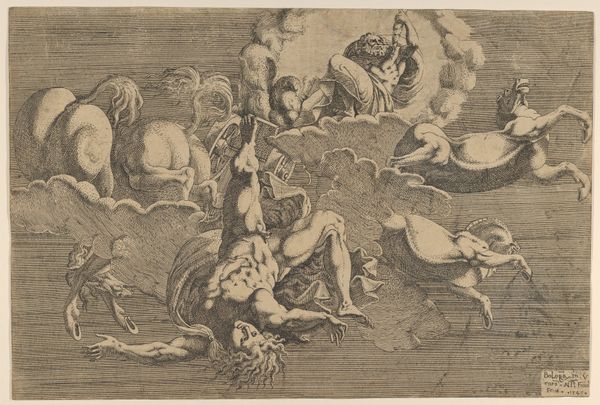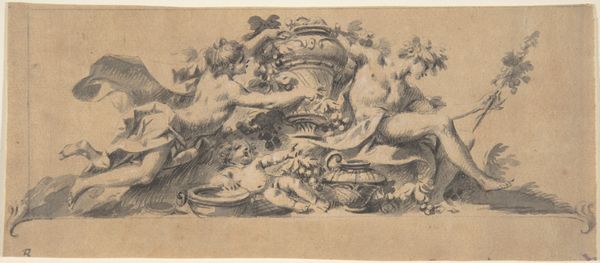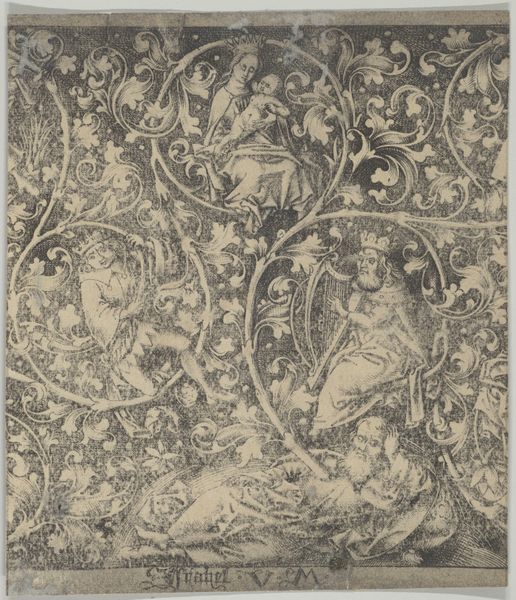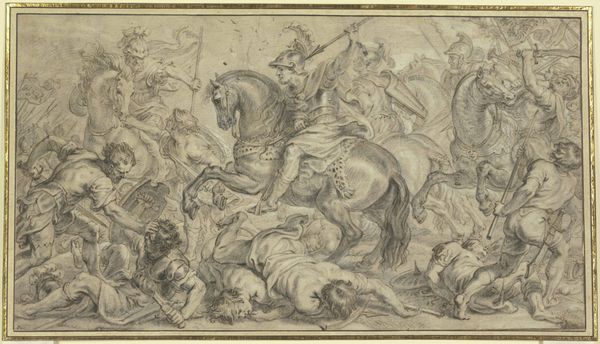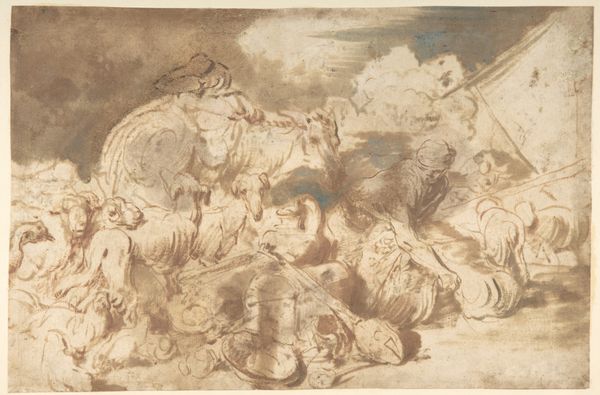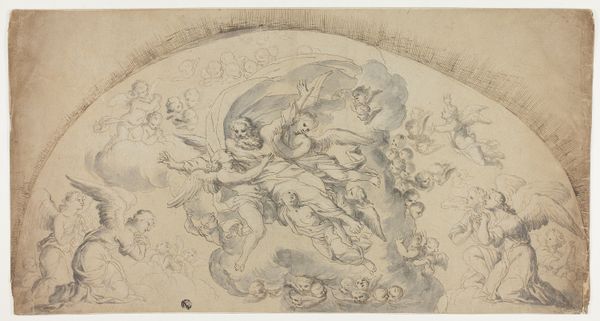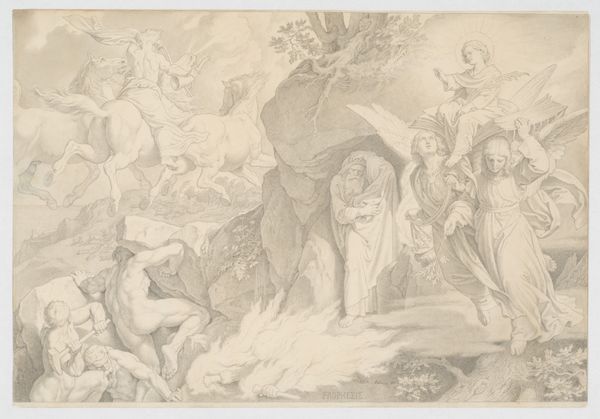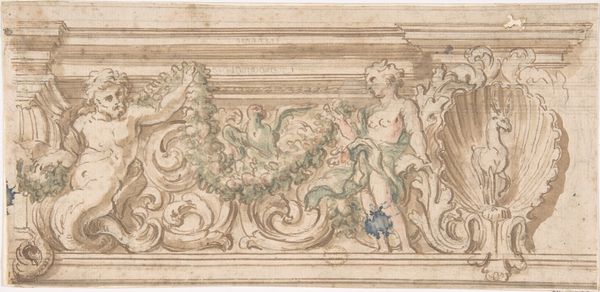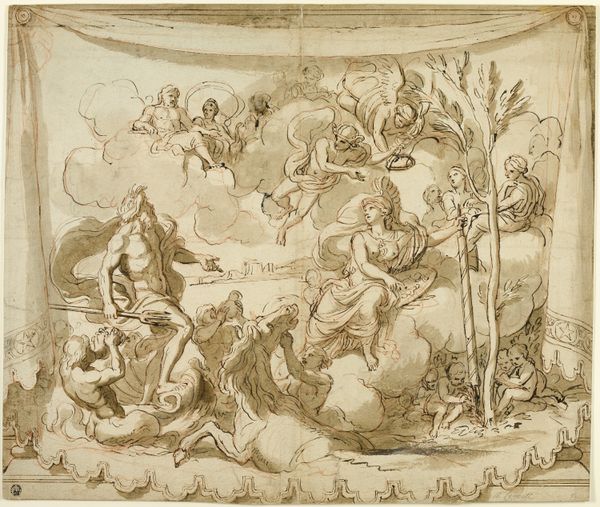
drawing, paper, ink
#
drawing
#
narrative-art
#
baroque
#
pen drawing
#
landscape
#
figuration
#
paper
#
ink
Dimensions: height 317 mm, width 414 mm
Copyright: Rijks Museum: Open Domain
Curator: Gazing at this piece, I'm immediately struck by its ethereal quality, a dreamlike gathering rendered in muted tones. What's your first impression? Editor: You know, it reminds me of stepping into a fantastical, almost biblical garden. The soft palette and meticulous details evoke a sense of timeless wonder, as though a secret, quiet symphony is being played. Shall we delve into the specifics? Curator: With pleasure! This is a drawing titled "Orpheus Charming the Animals with his Music," attributed to Gerard ter Borch the Elder, dating back to somewhere between 1626 and 1661. Executed with pen and ink on paper, you can find this beauty residing here at the Rijksmuseum. Editor: Indeed, the interplay of line and space in this drawing is particularly fascinating. Look at the density of the cross-hatching used to define form and shadow versus the comparatively blank space that creates implied texture. I find Ter Borch's treatment of the natural world as pure structure rather compelling. The grouping of the animals appears somewhat contrived; tell me more about that. Curator: Contrived maybe, yet deliberate, I would add! Borch uses the figure of Orpheus to orchestrate a commentary on civilization versus nature. Here we have an embrace between humanity and the animal kingdom as Orpheus brings his talent to enchant all within earshot. We imagine the capacity for harmony as ever-present; it needs but to be realized. I am fascinated that this same theme is so pervasive across civilizations, suggesting a near-universal longing for peace and concord. Editor: That is astute. When thinking about how harmony becomes embodied visually here, it is achieved less through an atmospheric coherence than through geometric variation and surface articulation. The animals aren't naturally assembled so much as arranged according to artful principles. They form a taxonomical tableau of nature subdued by music and art. Curator: That makes me think of the possibility of seeing the image less as a portrayal and more of an invitation; as a challenge for a contemporary interpretation that bridges divides between nature and the world. Editor: So beautifully expressed. It offers us so much to ponder, doesn’t it? This is more than just seeing: It's about connecting with narratives across the ages, recognizing ourselves within a complex visual tapestry.
Comments
No comments
Be the first to comment and join the conversation on the ultimate creative platform.
